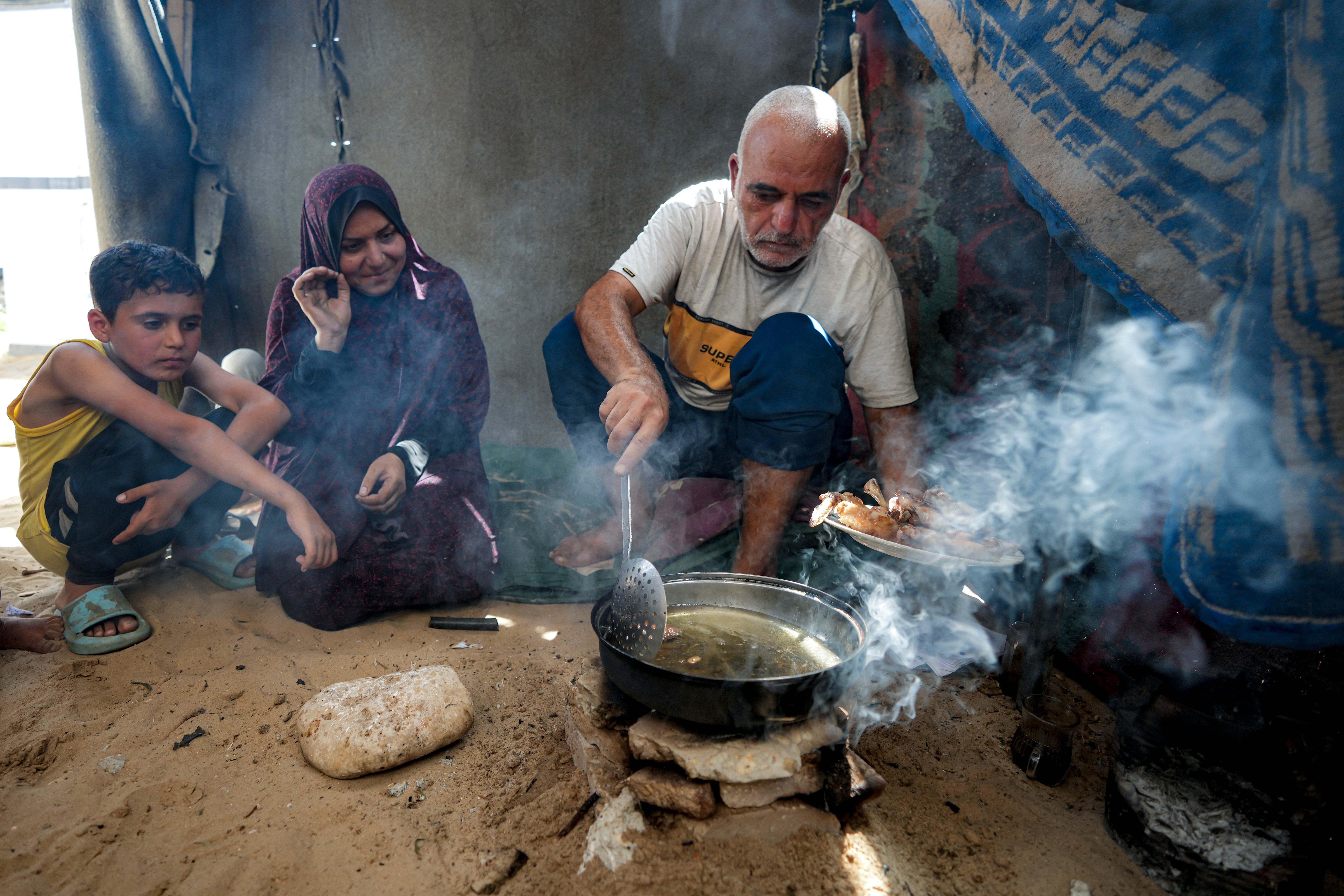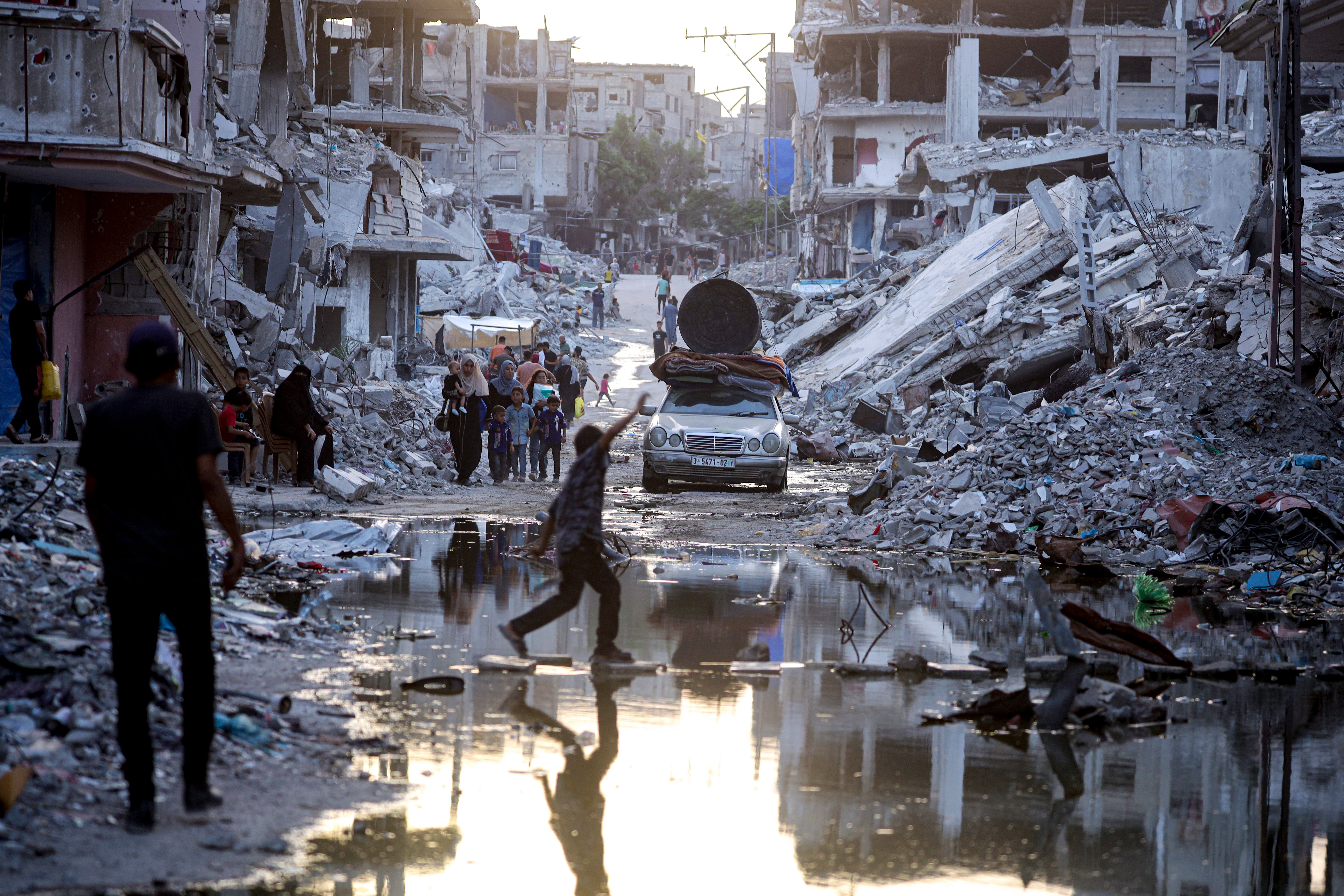Inside Gaza’s destroyed healthcare system: ‘Children scream in pain as we operate without painkillers’
Only a third of Gaza’s hospitals are open, supplies are running out, and medics are forced to amputate limbs without anaesthetic or antiseptic to save patients. Bel Trew speaks to a number of hospital staff about the harrowing scenes they face


Your support helps us to tell the story
From reproductive rights to climate change to Big Tech, The Independent is on the ground when the story is developing. Whether it's investigating the financials of Elon Musk's pro-Trump PAC or producing our latest documentary, 'The A Word', which shines a light on the American women fighting for reproductive rights, we know how important it is to parse out the facts from the messaging.
At such a critical moment in US history, we need reporters on the ground. Your donation allows us to keep sending journalists to speak to both sides of the story.
The Independent is trusted by Americans across the entire political spectrum. And unlike many other quality news outlets, we choose not to lock Americans out of our reporting and analysis with paywalls. We believe quality journalism should be available to everyone, paid for by those who can afford it.
Your support makes all the difference.Graphic content warning: The story contains details that some readers may find disturbing.
With no other choice, Palestinian doctors braced themselves as they began to amputate the right leg of a three-year-old child in Gaza without anaesthetic. Watching in horror was an American medic and volunteer who could only pray the screaming toddler would pass out from the pain.
Every day, medics had to operate on or stitch up as many as 30 children without proper pain relief. Some patients would have to be held down.
These horrific scenes took place at Abu Yousef al-Najjar hospital in Gaza’s southernmost city of Rafah in April: just a few weeks before, hospital staff were forced to evacuate and close the hospital when Israeli forces seized control of the area and a nearby aid crossing.
Before this al-Najjar was one of the few remaining medical centres left functioning in the area. But it was completely overwhelmed by the influx of wounded and running out of supplies, including painkillers.
Zena Saleh is a general surgery resident in New Jersey in the US. Earlier in the year she answered calls from medical charities for volunteers to travel to Gaza and assist with the unprecedented humanitarian catastrophe unfolding.
As a medical resident, she had expected she might be called on to change dressings, assist surgeons or even mop floors. When she arrived at al-Najjar, she realised that most of the team left were general practitioners (GPs) or medical students trying to work under constant fire with little to no medicines. The attacks on Gaza’s healthcare system and personnel had decimated the response, she says.
“The patients would always cry out in pain, screaming for their loved ones, while other medics would hold them down and they would cry and cry until they would eventually pass out from the level of shock,” she tells The Independent, recounting the horror of having to stitch up dozens of wounded children a day and carry out two full surgeries without proper anaesthesia.
“Their screaming was so traumatic to hear and deal with internally, we would all just hope they would pass out earlier rather than later,” she says.
Al-Najjar was a triage place “without the appropriate triage”, she continues. “We had no anaesthesia at all. Every procedure we did was without anaesthesia.”
That day, she says, Palestinian doctors had no choice but to amputate the right limb of the three-year-old injured in an Israeli strike to save the child’s life.
We had no anaesthesia at all. Every procedure we did was without anaesthesia
“This was the worst feeling ever. Honestly, I could only think: when are they going to pass out?”
Dr Mark Perlmutter, an orthopaedic surgeon in North Carolina who also volunteered at the same time – but at the European Hospital in Khan Younis, just north of Rafah – describes different but equally horrific scenes.
He is a veteran surgeon who has spent 30 years working on dozens of surgical missions in disasters and emergencies across the world, including treating the wounded at ground zero on 9/11 and operating on citizens in San Pedro Sula, Honduras (once named “the murder capital of the world”).
He says Gaza was “by far the worst” he had ever experienced in terms of civilian and child casualties and resources available to medics.
“Gaza was the first time I’ve ever held the brain of a six-year-old in my hand - after the child was hit by a sniper rifle round,” he tells The Independent from Washington DC where he had been giving his testimony to senators and members of Congress.
“After a bombing or an assault, the wounded would often come in, 10 or 15 children at a time, more than one to a gurney.
“We’d run to the emergency room. There would be 13 dying kids in it. Some on the floor, some on gurneys, some moved from gurneys to the floor, because that’s the one place you could work.”
Dr Feroze Sidhwa, a trauma and critical care surgeon from California, who also volunteered at the European Hospital in Khan Younis described injuries that caused insides to “be liquified”.
The United Nations’s humanitarian agency OCHA said that three hospitals have been evacuated and closed in Gaza during the last week alone, as Israel has ramped up its ground assault in Gaza’s largest city in the north. That means that only 13 out of Gaza’s 36 hospitals are now partially functional.
Medical Aid for Palestinians, an international health charity, has accused the Israeli military of “systematically dismantling Gaza’s healthcare system”, adding that the military had conducted more than 460 attacks on healthcare facilities and personnel since 7 October.

In a recent report it said at least 500 healthcare workers have been killed during Israel’s nine-month military assault on Gaza – more than the total number of medics reported killed across all global conflicts in 2021 and 2022. Israel’s military denies directly targeting healthcare facilities or civilians.
Israel launched its ferocious assault on Gaza in retaliation for Hamas’s 7 October attack on southern Israel during which around 1,200 people were killed and at least 250 people were taken hostage.
Since then, Palestinian health ministry says Israel’s assault on Gaza has killed over 37,000 Palestinians and injured a further 86,000 more, with an estimated 10,000 still trapped under rubble, most presumed dead. A letter published in The Lancet, a peer-reviewed general medical journal, suggested this week that the total direct and indirect death toll was likely upwards of 186,000, according to its authors’ estimations, in part due to the destruction of healthcare infrastructure.
Israel has vehemently denied it is targeting the healthcare system, and has questioned the Palestinian death toll. It has repeatedly accused Hamas, a designated terrorist group, of using hospitals as a cover for military operations (accusations international and Palestinian medics and aid organisations have repeatedly dismissed) . The Independent reached out to the Israeli military about these specific accusations but has yet to receive a response.
But there are concerns attacks on hospitals will only worsen as Israeli forces have intensified an operation in Gaza City in what the military said was intended to weed out militants, fromm Hamas and Islamic Jihad, sending thousands of Palestinians fleeing.
On Monday, the Episcopal Church of Jerusalem and the Middle East protested the closure of Al-Ahli Arab Anglican Hospital in Gaza City. A statement issued in the name of the Diocese of Jerusalem said the hospital has been “compelled to close by the Israeli army”.
On Sunday evening, a large amount of firing from drones occurred in the immediate vicinity of the hospital, it said. Meanwhile, medical aid is still not getting in, said Louise Wateridge, a spokesperson for the UN’s Palestinian refugee agency (UNRWA). She spoke to The Independent from Khan Younis, where she said UNRWA’s supplies, including insulin, will run out in a month.
“We have a huge backlog of medical supplies at the crossing points, the aid is just sitting waiting to come in,” she said, adding that the only chink of light is that UNRWA have managed to reopen a health centre in the completely destroyed area which was shuttered in January when it was surrounded by tanks.
But that is not enough.

“[Health workers] say they are basically treating a huge humanitarian crisis with a band aid – the core issues are not being changed or helped in any way.
“There are so many displacement orders in so many areas – everyone is surrounded by death. No matter where they go, death is waiting for them,” she adds.
The doctors who returned from Gaza have told The Independent that the lack of supplies had myriad knock on effects. Ms Saleh says the infection rates at al-Najjar hospital soared as there was no way to properly clean surgical equipment. They had run of alcohol and Betadine, an antiseptic, before she got there. The water supply was contaminated and there were no antibiotics.
“There was a kind of smell of death in the air: a mixture of old blood mixed with stool, mixed with rotting trash and mould. You couldn’t breathe. There were just people all over the floor,” she adds.
Dr Perlmutter and Dr Sidhwa describe wounds from “strange projectiles” they had never encountered before.
“I would see a small entrance wound, in some cases a small exit wound, with flesh turned to jello on the inside,” Dr Perlmutter says.
“I operate on extremities, so I would see almost no skin damage. But under the skin the bone had shattered into 10,000 fragments and the muscle that was vaporised.”
Dr Sidhwa, whose job it was to stop people haemorrhaging to death, says he also found these tiny-needle like entry wounds on children and adults where under the skin both lungs would collapse.
It comes as Israel and Hamas appear to be the closest they have been in months to agreeing to a ceasefire deal that would bring a pause in the war in exchange for the release of dozens of Israelis held hostage by Hamas in the Gaza Strip.
But obstacles remained, even after Hamas agreed days ago to relent on its key demand that Israel commit to ending the war as part of any agreement.
This article was amended on 24 July 2024 to clarify that the estimations of a death toll upwards of 186,000 were contained in a letter to The Lancet, and not in a peer-reviewed research paper.



Join our commenting forum
Join thought-provoking conversations, follow other Independent readers and see their replies
Comments